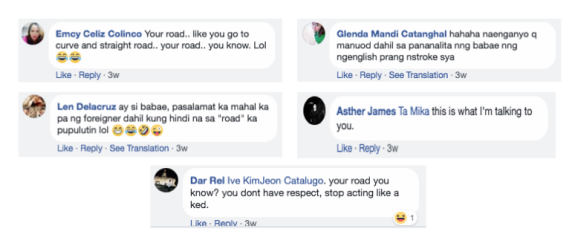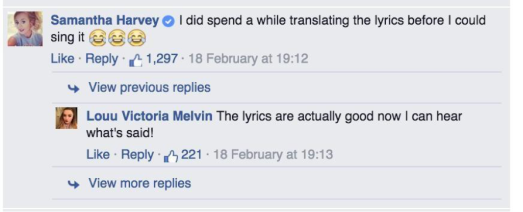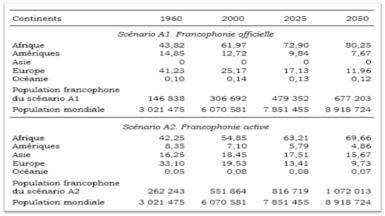Paulin Toutché
Comme toutes les variétés de français parlées en dehors de la France, le nouchi de Côte d’Ivoire est un français périphérique. La Côte d’Ivoire est un pays de l’Afrique de l’Ouest, situé entre le Liberia et le Ghana, et le nouchi y est parlé par une grande majorité de la jeunesse, qui représente 60% de la population. Dans les lignes suivantes, je vais tenter de montrer comment ce pays est arrivé aujourd’hui au nouchi, en partant du français de Dago à la fin des années 60 à celui de Zézé dans les années 70, et enfin au nouchi, paru dans les années 90, autant de variétés de français illustrées en bandes dessinées.
Le français de Dago a fait irruption sur la scène sociale ivoirienne, notamment à Abidjan, dans le contexte du boum économique à la fin des années 1960. En effet, les populations rurales désertent la campagne pour venir à Abidjan, la capitale ivoirienne. Analphabètes en français, obligés de communiquer dans une ville cosmopolite où seul le français permet aux citadins de communiquer entre eux, le paysan immigré en ville utilise un français approximatif. Le magazine Ivoire Dimanche ou ID de Côte d’Ivoire, publié à Abidjan, se saisit de ce phénomène linguistique, qu’il estampille le français de Dago, et le met en bandes dessinées, sous l’inspiration de Jean Louis Lacombe. Sortie en 1973, la bande dessinée Dago à Abidjan raconte donc les mésaventures abidjanaises d’un jeune paysan fraichement débarqué de sa campagne. Dago à Abidjan devient ainsi le premier album BD publié en Côte d’Ivoire, dont voici une scène. Le villageois Dago débarque à Abidjan, la ville de rêve…Après avoir essayé de répéter sa phrase, qu’il a apprise par cœur : « Moi viens voir mon frère Sopi qui posé Técoubé », il dit à un chauffeur de taxi : « Moi veux voir Sopi »
- Où il habite ?
- Il posé dans Técoubé
- Técoubé ? Mais où ça ?
- Técoubé seulement !
- Voici bus qui va là-bas
Dago va alors faire la connaissance du bus… Avec la bousculade et l’indiscipline des clients, il est basculé dans tous les sens, et s’écrie : « Mon vieux ! » Dans ce désordre, Dago est pris au collet par un passager en costume-cravate, qui lui brandit une carte déclinant sa profession, et l’interpelle sans ménagement : « Pourquoi tu me piétines ? Tu es fou ? »
- Oh ! Laisse-moi
- Tu sais qui je suis ?!
- C’est quoi ça !
Il est alors projeté du bus, aux cris de : « Broussard ! Sors ! Villageois ! »
Voilà une situation de dérision qui met en scène Dago, le campagnard débarqué à Abidjan, confronté à la rude vie d’une cité où règne la loi du plus fort, celle du plus riche que soi. Un rapide examen de son discours montre quelques formes syntaxiques. Ainsi, dans « Moi viens voir mon frère Sopi qui posé Técoubé », nous relevons la formule d’une phrase standard en français, P=SVO. Cette phrase a en effet un sujet, un verbe et un objet. C’est même une entité complexe, puisqu’elle comprend deux phrases reliées par une coordination « qui ». Nous notons aussi en filigrane la faute du double sujet ou décalage à gauche dans « Moi viens » qui pourrait être « Moi, je viens… », et l’emploi du verbe « posé », avec l’omission de l’auxiliaire « est » dans « Sopi qui posé », laissant croire que Sopi est un objet qui est posé à Atiécoubé, un quartier d’Abidjan. La phrase hypercorrecte serait : « Moi, je viens voir mon frère Sopi qui habite Atiécoubé. »
En octobre 1978, une crise économique commence en Côte d’Ivoire et Ivoire Dimanche change le personnage de sa bande dessinée, qui devient Monsieur Zézé. Dans sa parution du 8 février 1981, Zézé décide de retourner au village. Dans la forme syntaxique du français de Zézé dans cette scène, nous notons les mêmes constructions P=SVO, formule de la phrase française standard. Nous retrouvons néanmoins certaines confusions entre des phonèmes français, ce qui semble relever d’une décision éditoriale de commencer à représenter non seulement les particularités syntaxiques et lexicales de cette variété, mais aussi la façon dont sa prononciation diffère du français standard. Ainsi, par exemple nous lisons « Wala » pour « Voilà », l’adjonction de voyelles épenthétiques dans « pineu » au lieu de « pneu », la disparition des sons presque inexistants dans les langues locales, comme « in » dans « vitation », « r » « eu » et « l » dans « tu pati » « on va pati », « …si tu ve i va fai … »
La parution des bandes dessinées de Monsieur Zézé dure quelques années, puisqu’en 1990, le nouchi nait du besoin des jeunes délinquants de communiquer entre eux, nonobstant leurs lacunes en français. L’année 1990 marque en effet l’aggravation de la crise économique commencée à la fin des années 70, qui multiplie le nombre de chômeurs en Côte d’Ivoire. La délinquance juvénile prend donc de l’ampleur, et les jeunes délinquants utilisent le nouchi pour communiquer entre eux afin d’échapper aux traques de la police. Très limités dans leurs connaissances en français, ces jeunes Abidjanais comblent leurs lacunes en vocabulaire français par le recours à leur lague maternelle, comme dans la phrase nouchi suivante : « Les gens ont commencé à décaler, après il est venu dire y a son djê qui a pan… » Ici encore, nous avons des phrases françaises standards, P=SVO. Soulignons l’alternance codique ou l’hybridation dans la phrase « y a son djê qui a pan… », une énonciation complexe comprenant deux mots du lexique local, djê et pan, qui signifient respectivement « argent », « disparu ». Initié au départ par les jeunes délinquants, le nouchi est aujourd’hui sorti des cercles clandestins ou criminels pour être utilisé par toute la jeunesse, qui représente 60% de la population ivoirienne. La police, la justice et les publicistes s’en servent pour communiquer plus aisément avec les jeunes. Même les hommes politiques s’y sont mis pour mieux faire passer leurs messages. Ce recours aux lexiques des langues locales par les locuteurs nouchi mobilise également l’attention des sociolinguistes, aussi bien locaux qu’étrangers, qui multiplient les études sur le phénomène (Lafage 1991, 1998 ; Kouadio 2006, 2007 ; Ahua 2007 ; Konan 2010 ; Khalil 2012 ; N’Guessan, A.C. 2014 ; Boutin et Kouadio 2016 ; Kouakou 2017). Le magazine Gbich ! publie des BD sur ces jeunes nouchi. Des sites web http://www.nouchi.com/ et une radiodiffusion sont également dédiés à cette variété de français d’Abidjan. Un dictionnaire a été élaboré. La formalisation du nouchi est en cours.
Ouvrages cités
Ahua, Blaise Muchi. «Elaborer un code graphique pour le nouchi: une initiative précoce?» Le français en Afrique, n° 22. Nice: ILF-CNRS (2007): 183-198. Document.
Boutin, Akissi Béatrice & Kouadio N’Guessan, Jérémie. «Le nouchi, c’est notre créole en quelque sorte, qui est parlé par presque toute la Côte d’Ivoire.» HAL archives ouvertes (2016). Document.
Khalil, Cissé Aminata Bouraima. «Le nouchi, parler identitaire des jeunes de Côte d’Ivoire.» Cahiers Ivoiriens de Recherche Linguistique (2012). Document.
Konan, Séraphin Kouakou. «L’intrusion de mots nouchi dans la langue française: création ou désordre?» 4 12 2010. SUDLANGUES http://www.sudlangues.sn/ISSN:08517215 BP: 5005 Dakar-Fann (Senegal). Document. 16 10 2017.
Kouadio, N’Guessan Jérémie. «Le Français en Côte d’Ivoire: de l’imposition à l’appropriation décomplexée d’une langue exogène.» Document pour l’histoire du français langue étrangère ou seconde [en ligne], 40/41|2008, mis en ligne le 17 janvier 2011 16 10 2017. Document.
—. «Le Français: Langue coloniale ou langue ivoirienne?» Hérodote (2007/3 (n° 26)): 69-85. Document.
—. «Le Nouchi et les rapports dioula-francais.» Le français en Afrique (2006): 177-192. Document.
Lafage, Suzanne. «L’argot des jeunes Ivoiriens, marque d’appropriation du français?» Langue française (1991): 95-105. Document.
N’Guessan, Affoué Cécile. «Regard sur la norme endogène du français en Côte d’Ivoire.» Diacronia.ro (2014): 104-113. Document.
S., Lafage. «Hybridation et français des rues à Abidjan.» Alternances codiques et langues parlées en Afrique 1998: 279-291. Document.
http://nouchiradio.com/radiochannel/nouchi-radio/
http://www.editions-harmattan.fr/index.asp?navig=catalogue&obj





 Source:
Source: 


